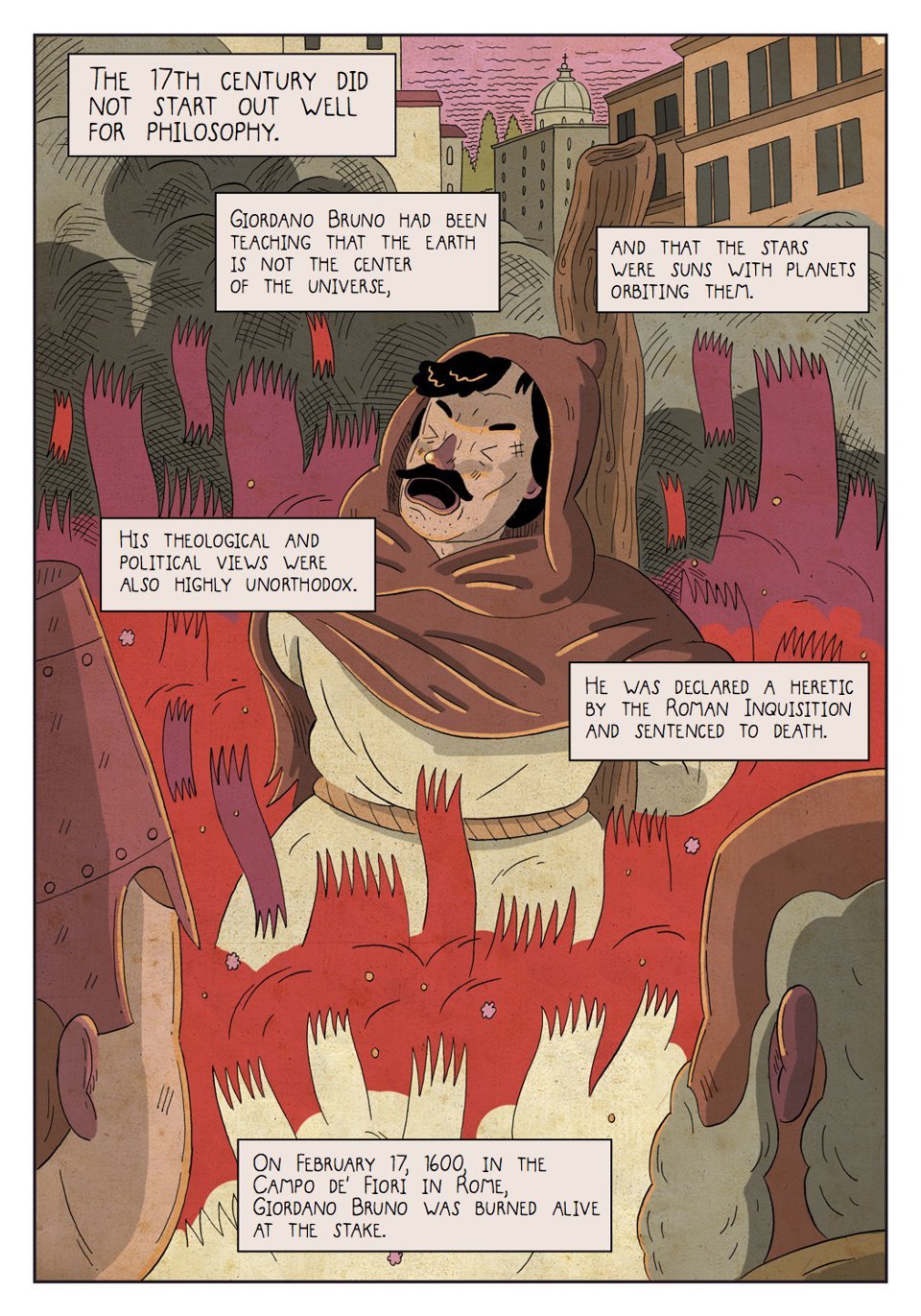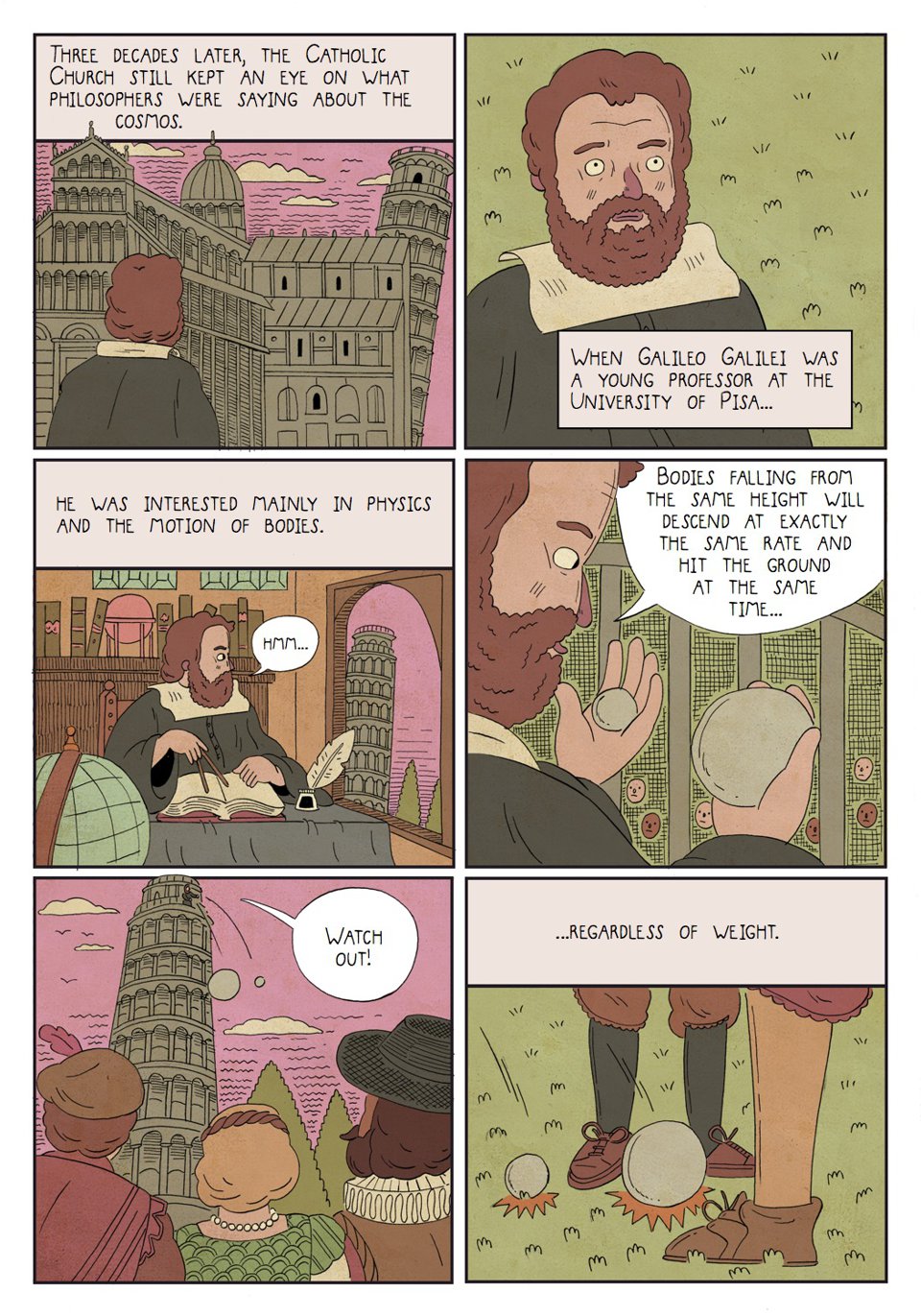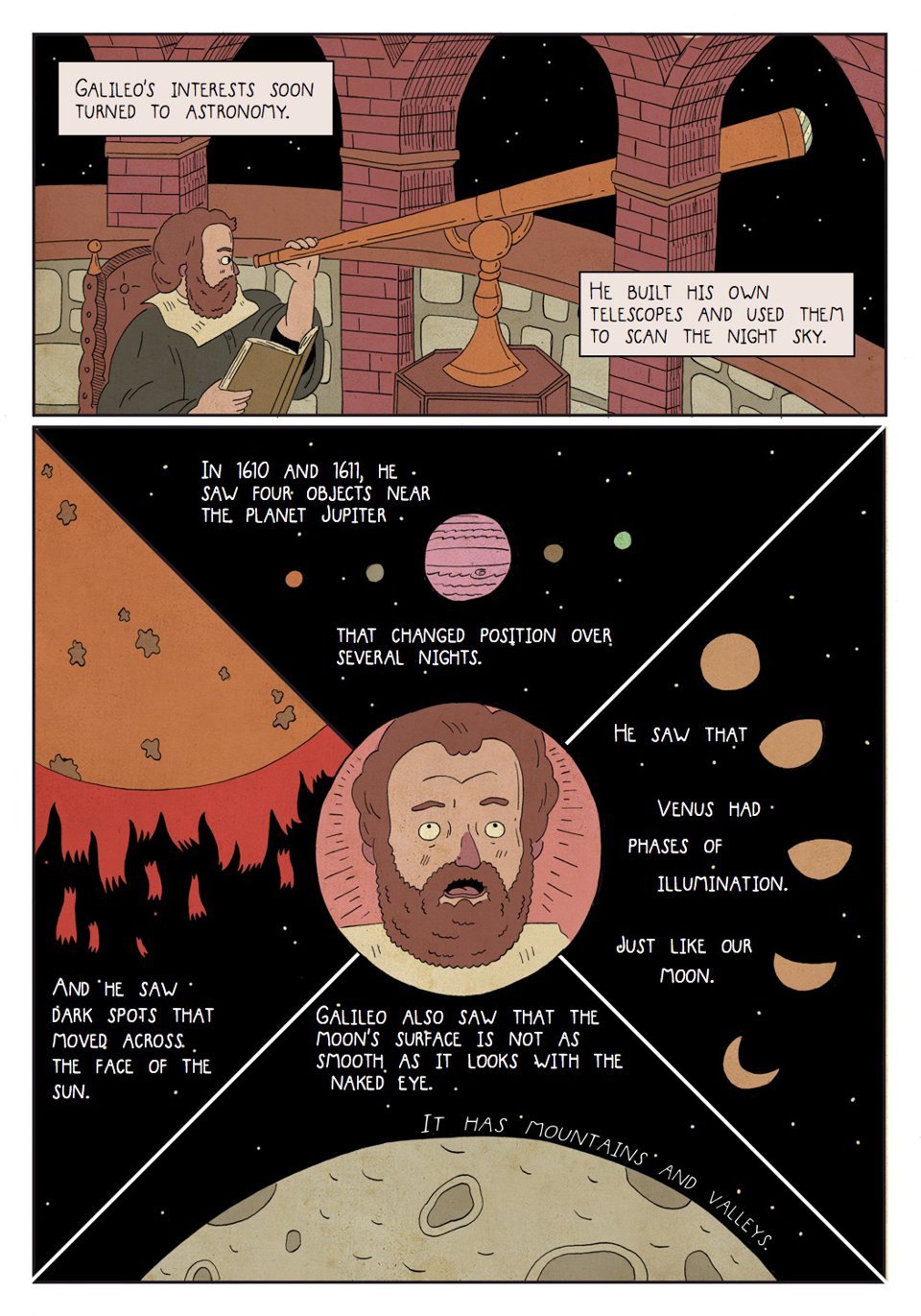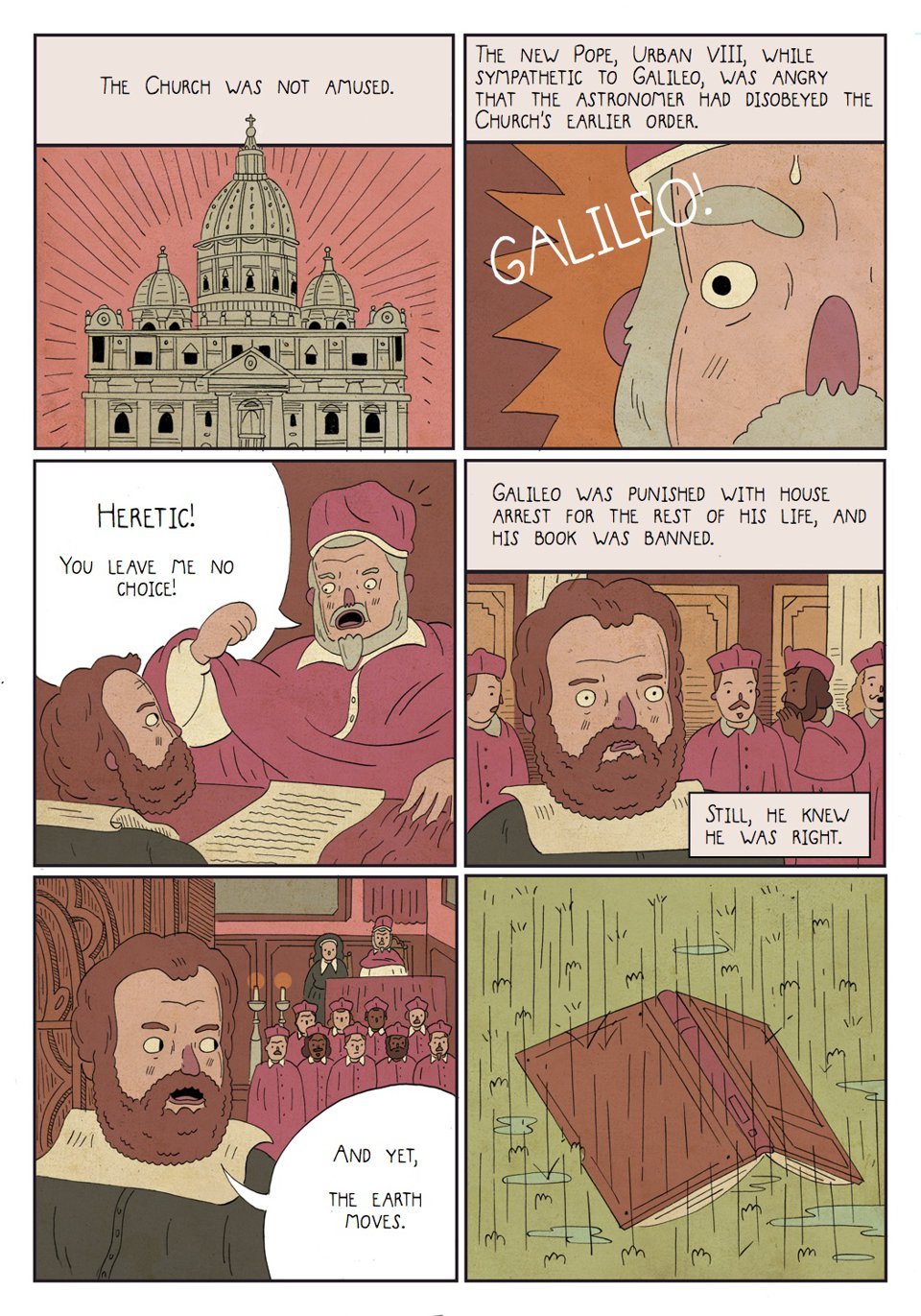
A new graphic novel, “Heretics!: The Wondrous (and Dangerous) Beginnings of Modern Philosophy,” by philosophy professor Steven Nadler and his graphic artist son, Ben Nadler, tells of the fight for science during the 17th century. The novel opens with what many consider to be the ‘patron saint’ of pantheism, Giordano Bruno, being burned at the stake for heretical views. Bruno held the (then) blasphemous view that the Earth was not the center of the universe, and the stars were suns with their own planets.
Published by Princeton University Press, the nearly 200-page book contains 173 color illustrations, illuminating the upheaval of Catholic dogma during the 1600’s. (Examples from the first chapter are below). The father/son author duo follows the controversial and challenging views of some of the Western world’s greatest thinkers, from Copernicus and Galileo through Spinoza and Newton. Set to be released June 20, 2017, the book is already the #1 best-seller in Modern Philosophy on Amazon.
The Nadler’s primary goal was to make the stories and ideas both accessible, and as engaging as possible without condescension. The novel takes some humorous liberties with historical fact (laptop computers wouldn’t be available for another 400 years), but does well to capture the intellectual triumphs of their philosopher protagonists.
Both enlightening and entertaining, the book shows how modern philosophical thought blossomed in the 17th-century, playfully but factually dealing with the nature of matter, God, mind-body dualism, the structure of society, and the existence of knowledge itself. Interspersed with quotes from the philosophers themselves, the narrative uses wit and humor to approach some of humanity’s deepest questions.
The text and illustrations deftly instruct those new to the period, while serving as a refresher for readers who have forgotten what they studied in history and philosophy. As elaborated in the pages, the philosophers of this age continued to disagree about matter and spirit, destiny, and the nature of God, but shared the belief that “the older, medieval approach to making sense of the world—with its spiritual forms and…its concern to defend Christian doctrine…no longer worked and needed to be replaced by more useful and intellectually independent models.”
Arguably the most fascinating and important period in the history of Western philosophy, the 17th-century saw dramatic changes to many people’s worldview. Concluding with the time of Isaac Newton, the Nader’s novel captures how one century upended more than a thousand years of ideas previously held as truth: Man was no longer at the center of creation, the Sun was no longer spinning around the Earth, and the church was no longer the authority on matters discoverable through scientific methods. As we face renewed challenges to science-based inquiry, the book provides a timely reminder that the freedom to be curious is worth defending.
Steven Nadler is the William H. Hay II Professor of Philosophy and Evjue-Bascom Professor in the Humanities at the University of Wisconsin–Madison. His books include Spinoza: A Life, which won the Koret Jewish Book Award, and Rembrandt’s Jews, which was a finalist for the Pulitzer Prize. He lives in Madison. Ben Nadler is a graduate of the Rhode Island School of Design and an illustrator. He lives in Chicago. Follow him on Instagram at @bennadlercomics.
A preview of some of the first chapter is below:







Very cool !